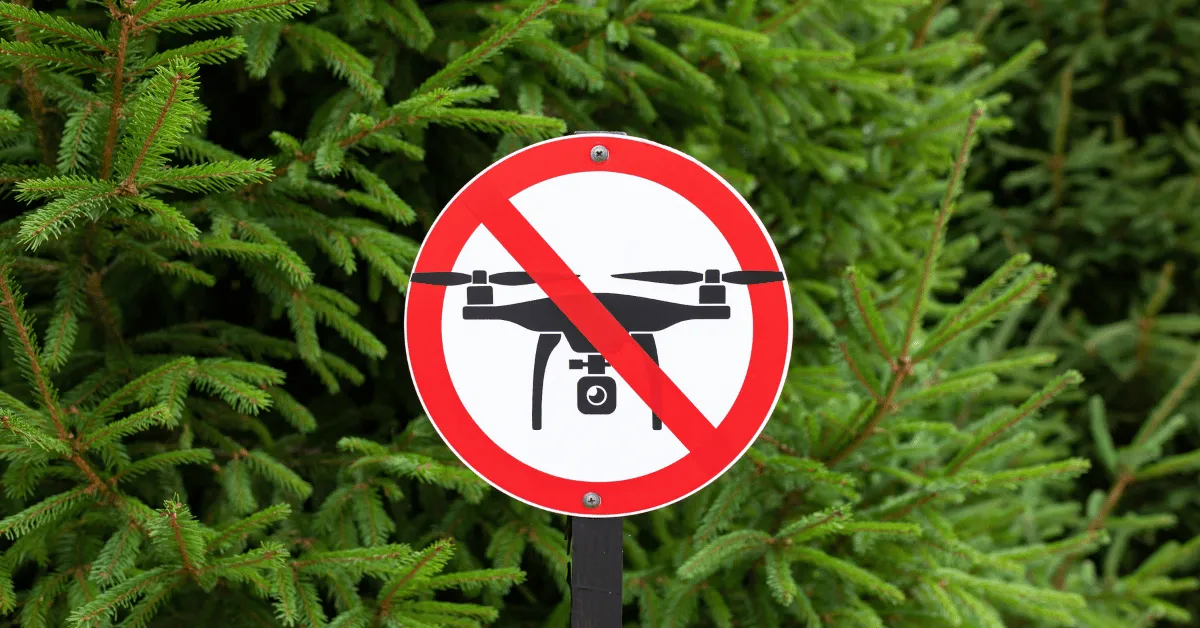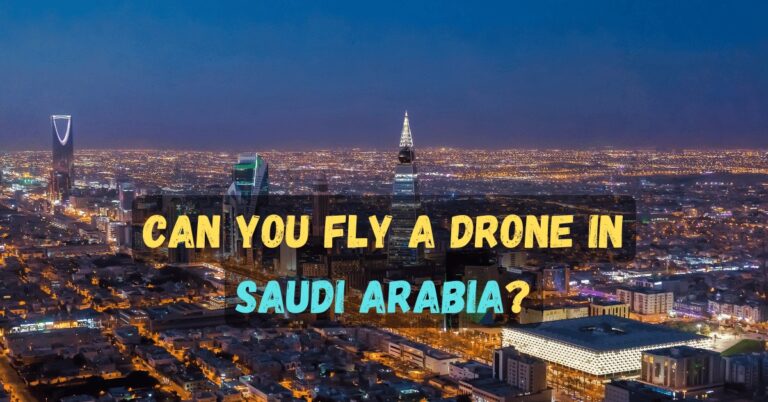Can You Fly a Drone in Class E Airspace? (Everything You Need to Know)

Yes, you can fly a drone in Class E airspace. The Class E airspace is not as strict as the other airspaces but it does have some restrictions. For example, flying a drone within 5 miles of an airport without prior authorization from air traffic control is not allowed no matter, if you are allowed to fly a drone there.
In this article I am going to discuss the different classifications of Class E airspace, how to get authorization for Class E airspace, if they’re needed, and other important regulations that drone pilots need to follow.
So if you want to fly your drone in the Class E airspace then let’s know how you can fly.
Key Takeaways
- Yes, You Can Fly in Class E: Drones can be flown in Class E airspace, but there are important rules to follow.
- ATC Authority: Class E airspace is controlled, and regulated by air traffic control (ATC) for safe drone operations.
- Stay Below 400 Feet: Maintain drone altitude below 400 feet above ground level (AGL) in Class E airspace.
- Avoid Manned Aircraft: Keep a safe distance from airplanes, helicopters, and other manned aircraft.
- Authorization Requirements: For Class E2 airspace near airports, ATC authorization is required; for other Class E airspace, follow regulations.
- LAANC for Authorization: Use the Low Altitude Authorization and Notification Capability (LAANC) system to quickly obtain airspace authorization.
Can you fly a drone in class E airspace?
Class E airspace is a type of controlled airspace that surrounds most airports in the United States. It is considered a controlled airspace because air traffic control (ATC) has the authority to regulate aircraft operations in this airspace.
So, why I am telling you this? Because it doesn’t matter, if you are allowed to fly your drone in any specific airspace you still need to obey the rules and orders by the authority.
So, in general, you can fly a drone in Class E airspace, but there are some restrictions. Some of the restrictions are:
- You must fly your drone below 400 feet above ground level (AGL).
- You should stay away from airports and helicopters.
- You should avoid flying near manned aircraft.
- You should be aware of the weather conditions and other hazards.

So, if you are flying a drone in Class E airspace near an airport, you must also obtain prior authorization from ATC. You can get authorization to fly your drone in Class E2 airspace through the Low Altitude Authorization and Notification Capability (LAANC) system.
Let me tell you something. There are different classifications of Class E airspace in some of which you must obtain authorization and in some of them, you don’t need any authorization.
What are the different classifications of Class E airspace?
There are 8 different classifications of Class E airspace but they are also for other aircraft. But mainly for drone operators, there are only three different classifications of Class E airspace.
- Class E4
- Class E3
- Class E2
Class E4: This is the most common type of Class E airspace and extends upwards from Class G airspace to 10,000 feet above ground level (AGL).
It does not require authorization to fly a drone in, but drone pilots must follow all the rules and regulations that apply to Class E airspace, such as maintaining a visual line of sight (VLOS) with their drone and staying below 400 feet AGL.
Class E3: This type of Class E airspace extends upwards from Class G airspace to 6,000 feet AGL. It does not require authorization to fly a drone in, but drone pilots must follow all the rules and regulations that apply to Class E airspace, such as maintaining VLOS with their drone and staying below 400 feet AGL.

Class E2: This type of Class E airspace is the surface area of an airport with an operational control tower. It requires authorization from air traffic control (ATC) to fly a drone in. The authorization process can be done through the FAA’s LAANC system.
It is important to note that the airspace classification around an airport can change depending on the time of day and the amount of air traffic. Drone pilots should always check the latest airspace regulations before flying their drones near an airport.
Here is a table summarizing the different classifications of Class E airspace for drone pilots:
| Classification | Altitude | Authorization Required |
|---|---|---|
| Class E4 | 10,000 feet AGL | No |
| Class E3 | 6,000 feet AGL | No |
| Class E2 | Surface area of an airport with an operational control tower | Yes |
How to know where is Class E airspace?
It is very important to know because if by any accident you start flying your drone in Class E airspace then there will be so many consequences.
Now let me help you to know where is Class E airspace.
- Use an aeronautical chart. Aeronautical charts are maps that show airspace classifications, as well as other information such as airports, runways, and navigation aids. You can find aeronautical charts online or at most aviation stores.
- Use a flight planning website or app. There are many flight planning websites and apps that can help you plan your flight and identify the airspace classifications along your route. Some popular options include:
- SkyVector: https://skyvector.com/
- FlightAware: https://flightaware.com/
- ForeFlight: https://foreflight.com/
- Ask a flight instructor or other aviation expert. If you are not sure where Class E airspace is, you can always ask a flight instructor or other aviation expert for help. They will be able to help you identify the airspace classifications in the area where you are flying.

Here are some specific things to look for on an aeronautical chart to identify Class E airspace:
- The color is magenta. Class E airspace is typically depicted in magenta on aeronautical charts.
- The letters “E” or “E2”. The letters “E” or “E2” may also be used to denote Class E airspace.
- The altitude of the airspace. The altitude of Class E airspace is also shown on aeronautical charts.
It is important to note that airspace classifications can change, so it is always a good idea to check the latest charts before you fly. You can also contact the FAA or your local airport to get more information about airspace classifications in your area.
Big Tip For You
“Navigate Class E airspace with confidence! Remember to maintain visual line of sight, stay below 400 feet AGL, and adhere to airspace rules. For hassle-free drone flights, use tools like LAANC for quick authorization.
Sulman Khan
How to get authorization to fly a drone in Class E2 airspace?
To get authorization to fly a drone in Class E2 airspace, you can use the FAA’s Low Altitude Authorization and Notification Capability (LAANC) system. LAANC is a web-based tool that allows drone pilots to request and receive airspace authorization from air traffic control (ATC) in real-time.
To use LAANC, you will need to create an account and have a drone that is compliant with the FAA’s Part 107 regulations. Once you have created an account, you can search for the airspace where you want to fly and request authorization. ATC will typically respond to your request within minutes.
If you are not able to get authorization through LAANC, you can contact the FAA directly to request authorization. However, this process can take longer and is not always guaranteed.
Here are the steps on how to get authorization to fly a drone in Class E2 airspace using LAANC:

- Go to the LAANC website and create an account.
- Specify the location where you want to fly your drone.
- Select the type of aircraft you are flying.
- Select the maximum altitude you will fly at.
- Click “Request Authorization”.
- ATC will review your request and typically respond within minutes.
- You will be notified if your request is approved.
You can also use the LAANC mobile app to request authorization. You can use the app on iOS and Android devices.
Here are some additional things to keep in mind when flying a drone in Class E2 airspace:
- You must always maintain a visual line of sight (VLOS) with your drone.
- You must stay below 400 feet AGL.
- You must avoid flying near airports or other restricted areas.
- You must obey all the other rules and regulations that apply to flying drones in Class E airspace.
Do you need special permission or follow any specific regulations to fly a drone in Class E airspace?
According to the FAA regulations, if you are an FAA-certified remote pilot under the part 107 regulations, you need to get prior approval to operate a drone in Class B, C, D, or E airspace.
However, you normally will not need ATC (Air Traffic Control) authorization to fly a drone in Class E airspace, but there are rare exceptions where Class E airspace appears to be located near an airport.
You will still need to obtain authorization from the appropriate air traffic control (ATC) in this situation.
Part 107.41 also states that no person may operate a small UAS(Unmanned Aircraft System) “within the lateral boundaries of the surface area of Class E airspace designated for an airport unless that person has prior authorization from ATC”.

Therefore, if you plan to fly a drone in Class E airspace, it is recommended that you check with the FAA and relevant ATC to ensure that you are following all regulations and obtaining any necessary permissions or authorizations.
What airspace can drone pilots operate in?
If you want to fly your drone in Class E airspace without any worries then you will have to follow some of the rules, below are some of them.
Obtain FAA certification. If you plan to fly your drone for commercial purposes, you must obtain FAA certification under Part 107 regulations. To do this, you must pass a knowledge test and meet other requirements.
Check for ATC authorization. In most cases, you do not need ATC authorization to fly in Class E airspace. However, if you are flying near an airport, you may need to obtain authorization from the air traffic control (ATC).
Fly within altitude limits. Class E airspace has different altitude limits, depending on the location. Be sure to fly within the designated altitude limits.
Maintain visual line of sight (VLOS). Always keep your drone within your visual line of sight while flying. You must maintain visual line of sight (VLOS) with your drone at all times.

Avoid prohibited areas. Be aware of any prohibited areas within Class E airspace, such as restricted military zones or other restricted airspace. Do not fly your drone in these areas.
Follow Part 107 regulations. As an FAA-certified remote pilot, you must adhere to the Part 107 regulations, which include rules such as not flying over people, flying during daylight hours, and maintaining a safe distance from other aircraft.
Be aware of other air traffic. Even though Class E airspace is generally less congested than other controlled airspace classes, it is still important to be aware of other aircraft in the vicinity. Maintain situational awareness and yield the right of way to manned aircraft.
Obtain additional permissions if needed. If you plan to conduct specific operations in Class E airspace that require additional permissions, such as night operations or flights near airports, you may need to obtain waivers or additional authorizations from the FAA.
Can VFR pilots fly in Class E airspace?
Yes, VFR (Visual Flight Rules) pilots can fly in Class E airspace. Class E airspace is controlled airspace that serves a variety of terminal or en route purposes, and it is designated to support both IFR (Instrument Flight Rules) and VFR operations.
In Class E airspace, IFR aircraft must operate on an ATC (Air Traffic Control) clearance. However, VFR aircraft are not required to be in contact with ATC, but they are still responsible for maintaining situational awareness and avoiding other aircraft.
It is important to note that Class E airspace can change depending on the time of day and the amount of air traffic. Pilots should always check the latest airspace classifications before flying.

Here are some of the things that VFR pilots need to keep in mind when flying in Class E airspace:
- They must maintain visual contact with the ground or other objects at all times.
- They must avoid flying in areas where there is a lot of air traffic, such as near airports.
- They must be aware of the altitude restrictions for Class E airspace.
- They must have a plan for how they will communicate with ATC if they need to.
By following these guidelines, VFR pilots can safely fly in Class E airspace.
Important FAQs
Can I fly a drone in Class E airspace without any restrictions?
Do I need authorization to fly a drone in all types of Class E airspace?
How can I identify Class E airspace on an aeronautical chart?
Can I use a flight planning app to identify Class E airspace along my route?
If I want to fly my drone in Class E2 airspace, how can I get authorization?
What are the specific rules for flying a drone in Class E airspace near an airport?
Can VFR pilots fly in Class E airspace without ATC contact?
Are there any specific requirements for commercial drone pilots in Class E airspace?
Final Thoughts
In this article, we discussed the different classifications of Class E airspace and how to get authorization to fly a drone in Class E airspace. We also discussed the important regulations that drone pilots must follow when flying in Class E airspace.
It is important to note that the airspace classification around an airport can change depending on the time of day and the amount of air traffic. Therefore, it is always best to check with the FAA or the airport before flying a drone in Class E airspace.
By following the guidelines in this article, you can help to ensure a safe and legal drone flight in Class E airspace.
Images by: Canva.com
Can You Fly a Drone in The Rain? (My Best Tips)
“Rainy day dilemma for your drone? ☔ Get the best tips for wet-weather flying in our quick article. Don’t let raindrops keep you grounded – read it now!”







